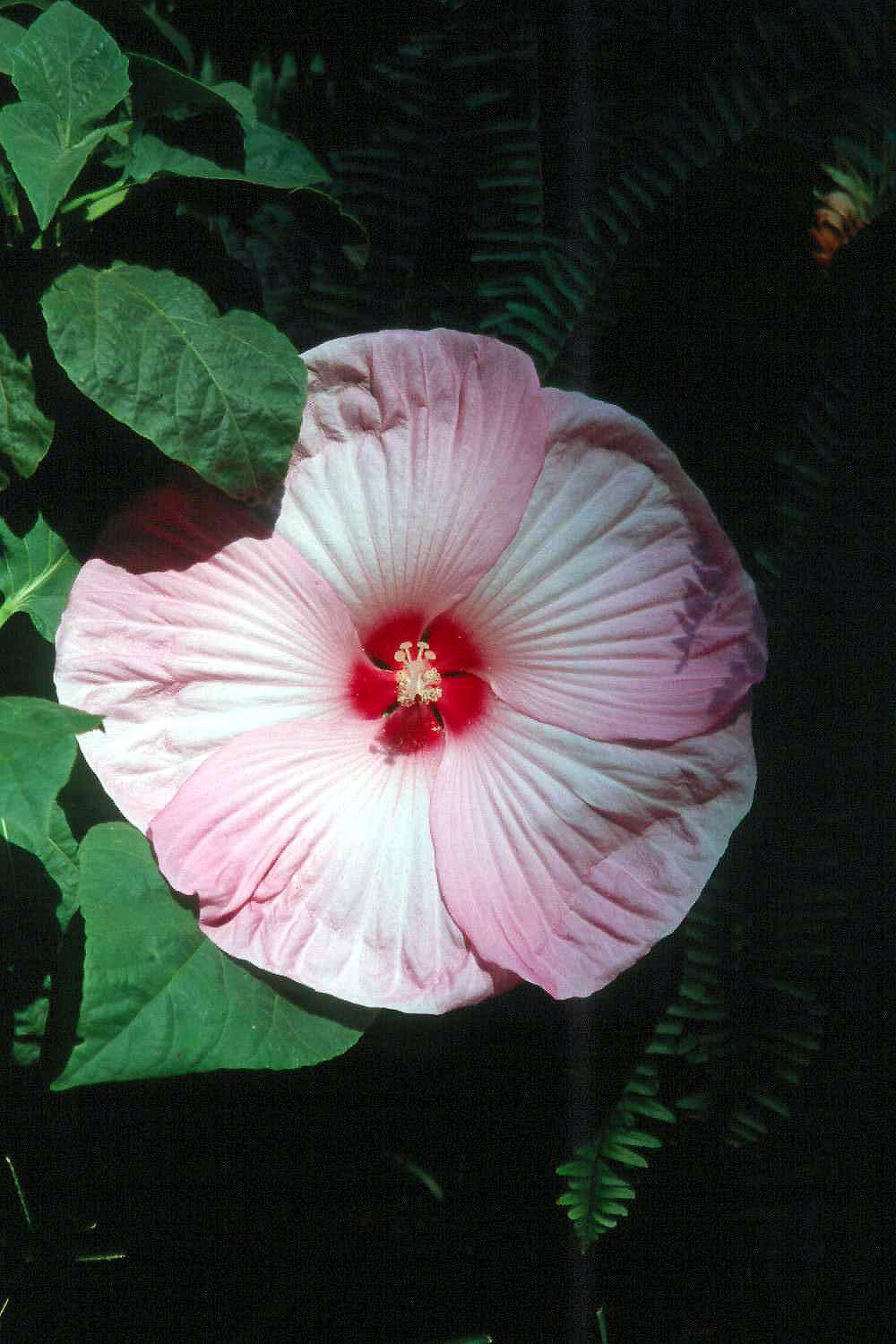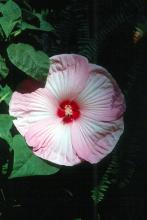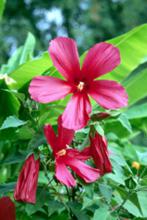Information Possibly Outdated
The information presented on this page was originally released on July 9, 2001. It may not be outdated, but please search our site for more current information. If you plan to quote or reference this information in a publication, please check with the Extension specialist or author before proceeding.
Perennial hibiscus give a tropical look
By Norman Winter
MSU Horticulturist
Central Mississippi Research & Extension Center
When you look at a tropical hibiscus blooming on your deck or patio, it is easy to conjure up visions of the Caribbean and the sounds of a steel band. It's funny how plants can mentally take us where neither our budget nor time will allow. Can a perennial hibiscus do the same? You bet your bottom dollar!
Garden centers have been loaded with an assortment of perennial and tropical hibiscus that can make our backyards resemble the exotic look of the islands. The tropical hibiscus, known botanically as Hibiscus rosa-sinensis, is an evergreen shrub in warm climates. Our coastal counties grow it as a perennial, but the rest of us have to protect it in the winter.
Perennial hibiscuses have names like Hibiscus moscheutos, Hibiscus coccineus and even Malvaviscus arboreus.
The tropical hibiscus originated in China. Many of the perennial hibiscuses originated in the southern United States and in South America. All are related to our well-known cotton and okra plants. The tropical hibiscus has spectacular flowers of bright orange, yellow, red, pink and white, and blends of these colors. Some have double blossoms.
The perennial hibiscus is equally lavish in color with red, maroon, pink and white flowers. These can be enormous like the Moy Grande that will reach 1 foot in width and have loads of other attributes. The small bright red flowers of the Turk's Cap hibiscus (Malvaviscus arboreus) make it one of our best hummingbird plants.
Think about how you can use perennial hibiscus in the tropical landscape. Create an exotic look with a large banana plant growing behind one of these shrubs, or plant a yellow bush form allamanda in front of the tall red, single-flowered Texas Star hibiscus (Hibiscus coccineus).
Hibiscuses belong in the landscape whether combined with bananas, cannas or another tropical plant. Their requirements are much like those of other annuals. Whether you choose the perennial or tropical types, plant in well-drained, well-prepared beds and use a good layer of mulch to keep the soil evenly moist through the season.
Choose a site with plenty of sunlight. Morning sun and filtered afternoon light are just about perfect in our state. Hibiscus bloom on new growth, so it is important to keep it growing vigorously throughout the season. Keep them well fed and watered during droughty periods.
Many gardeners think that the prolific flower production of a hibiscus requires a lot of super bloom-type fertilizers high in phosphorous, but this is not the case. Hibiscus prefer a balanced fertilizer given out in small monthly applications.
Water daily if you are growing hibiscus or any other plant in containers during the summer. Nutrients quickly leach from the soil, so apply a dilute, water-soluble fertilizer weekly or add time-released granules per label recommendation.
Periodically, we get calls from gardeners who get aphids and spray them with Malathion. The hibiscus does not like this insecticide, as it results in severe foliage burn. If possible, simple pick the aphids off hibiscus buds, but if the problem is severe, make sure your insecticide can be used on hibiscus. Read the label!
Whether you are treating hibiscus, roses or any other plant during the summer, water them well a couple hours before the insecticide application.
I am passionate about the tropical hibiscus and wish gardeners everywhere could see the new varieties that will be coming out in the near future. It is also exciting when a perennial makes our yards look like Jamaica.




